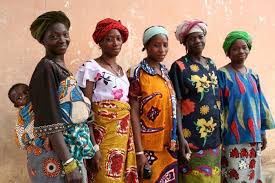If you are a woman applying for a job, having another woman in the final candidate pool could significantly improve your chances by 50%, according to a recent report.
“When there is only one woman, she does not stand a chance of being hired, but that changes dramatically when there is more than one,” the report’s authors wrote in the Harvard Business Review on Tuesday.
“When there was only one woman or minority candidate in a pool of four finalists, their odds of being hired were statistically zero. But when we created a new status quo among the finalist candidates by adding just one more woman or minority candidate, the decision makers actually considered hiring a woman or minority candidate.”
The report was based on three different studies, conducted by researchers at the University of Colorado’s Leeds School of Business. In the first study, 144 undergraduate students were deciding between three job candidates – some of which had what the report’s authors called “stereotypically black names”. The study found that if the majority of finalists were white, participants tended to recommend a white candidate and if majority of finalists were black, they would recommend a black candidate. In the second study, 200 students made a similar decision, but this time based on gender.
In the third study, the researchers looked at 598 finalists considered for jobs at a university – 174 of those finalists received job offers over a three-year period. The average hiring pool for this study was four finalists.
While some might consider these candidate pools small, a typical corporate job listing receives 250 applications on average. Those resumes are then sorted either by software or a recruiting manager and are narrowed down to a pool of four to six finalists, who are then called in for an interview.
The report was authored byStefanie K Johnson and David R Hekman, both assistant professors, and Elsa T Chan, a PhD candidate at the university. On 12 April, the national equal pay day, they presented their findings at the White House.
Among the feedback they received was shock at the fact that one minority or female candidate in the finalist pool is not enough, according to Johnson.
“So many companies, for such a long time, have been working to get a woman in the pool: ‘We have to get one woman in the pool. We have to get one minority in the pool.’ And that’s been [human resources] effort to at least get one minority candidate,” she explained “And what this paper says is that it’s not enough to include just one female or one minority candidate in the pool to make yourself feel better. It isn’t a true diversity effort.”
The researchers themselves were surprised at how much the subjects in their studies fell in line with the status quo.
“I was extremely shocked [by the findings],” Hekman told the Guardian.
One of the more interesting findings was that “people who were the most sexist and the most racist were also the most likely to be sensitive to the bias”, Johnson said.
“Maybe that’s what the future research should look at: what’s the thought process here?” said Johnson. “Because I have been in hiring situations where people are like, well, we can’t just hire this person because they are a minority. But if you didn’t know they were minority, you might have hired the person anyway. If you are pigeonholed as that one minority, no one really looks at their qualifications, they just look at the fact that they are a woman.”
To those worried that including a second minority or female candidate to the finalist pool is “a type of affirmative action or reverse discrimination against white men”, researchers point out the breakdown of the US workforce.
According to the most recent jobs report from the US department of labor, there are 65 million white men in the workforce and about 55 million white women. And while particular minorities make up a smaller portions of the workforce – there are 8.7 million African-American men, 9.7 million African-American women, 14.5 million Hispanic men and 10.8 million Hispanic women – altogether they make up 43.7 million people in the workforce.
Furthermore, the argument that all-white male candidate pools are due to skills shortages among people of color and women also doesn’t hold up. In 2014, 29.9% of men and 30.2% of women had graduated college, according to the US census bureau. A new report published by the Economic Policy Institute also found that recent young black college graduates aged 20 t0 24 “currently have an unemployment rate of 9.4% – higher than the peak unemployment rate for young white college during the recession”, which was 9%.
“This is the solution for this huge problem of diversity in organizations,” said Hekman. “It’s simple. How do you get more diversity at the top? How do you get more diversity anywhere? How do you make a more balanced organization? This is it. Have two women. Have two minority [candidates].”
Johnson and her colleagues agree that their report is not a definitive piece of research on the subject.
“To be sure, our findings would need to be replicated in order to see how these effects play out in other contexts, and we should note that the study results have not appeared in a peer-reviewed journal,” they wrote in HBR.
“However, we think these results are a great foundation for future research to build on. As a society, we have spent a lot of time talking about our diversity problem but have been slow to provide solutions. We believe this ‘get two in the pool effect’ represents an important first step to overcoming unconscious biases and ushering in the racial and gender balance that we want in organizations.”





No comments:
Post a Comment